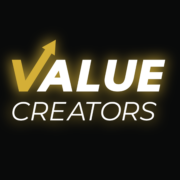153. Brett Lindell: Designing and Assembling a Breakthrough Business in Construction
Design & Assembly is the second pin (after Imagination) in the Economics For Business GPS system — the toolset to help entrepreneurs navigate their business environment. We talk to Brett Lindell, CEO of Pantheon Holdings (which includes Aegis Exteriors and Fortress Roofing) about his Design & Assembly approach that has helped him build a fast-growing business from scratch in the crowded, competitive, and demanding field of regional house construction. His advice: there are plenty of resources available; if you assemble the right resources to fit a system of assuring and delivering the best customer service, there’s a lot of growth to be harvested, whatever the industry.
Key Takeaways & Actionable Insights
The entrepreneurial method uses currently available means to create the possibility of new future outcomes.
The entrepreneurial method is not to try to control outcomes but to put available resources to use to explore possibilities. Brett Lindell used the method for his business launching pad:
Who am I? Experienced as a US Marine, a college student and a corporate executive in learning, planning, doing, and relationship building.
What do I know? A lot. How Marine Corps plan complex missions, and how they train inexperienced young people to implement amidst on-the-ground chaos. How the system of a global corporation puts the highly engineered products of a worldwide manufacturing web in the hands of construction site workers equipped with nothing more than hammers to produce sturdy and beautiful houses. How sandy beaches and a good climate attract residents who want to buy homes.
Whom do I know? There are companies in the construction industry craving nothing more than simple, reliable good service — which is scarce. There are young people graduating college in my region with limited job prospects who are enthusiastic and highly trainable.
Controlled downside: The entrepreneurial method controls downsides, and doesn’t pretend to control outcomes. Brett’s controlled downside was public commitment to starting, with the consequent specter of public shame if he didn’t succeed, knowing he hated the very possibility of shame.
Design is the series of steps from idea to a working system.
Brett Lindell set out to design and assemble a system of systems to achieve his mission.
Geography/Market system: A magnet for homeowners (beaches, ocean, climate, beauty, great place to live) and therefore for developers and builders. Not dominated by cities and so the construction market is highly dispersed.
Labor resource system: Young people graduating college in the area face limited employment opportunities combined with high enthusiasm to stay in the area.
Organizational system: Integrate geography and labor resources via decentralized command that locates tools and decision-making autonomy in the hands of front-line customer-facing employees.
Service system: Basic research (talking to potential customers) revealed that the addressable market is for reliable service: answer the phone when they call, be on time for deliveries and appointments, keep the promises you make. Brett’s system is classic system design of simple rules: employees must (1) tell the truth, (2) pick up the phone when it rings, (3) return all phone calls, (4) customers in all directions — i.e., treat everyone like a customer and serve them as they want to be served whether they’re suppliers, colleagues, or anyone else in the system. (And for Brett, his employees are his most important customers.)
Rich knowledge encoding: Brett believes in handbooks — a belief he learned from the Marines. Handbooks encode all the knowledge of the firm on how to follow every process and implement every task. Every employee can thereby benefit from all the accumulated knowledge and experience in the firm, and the handbooks are continuously updated via new experiences and new knowledge.
Tech systems: In a relatively low-tech industry, Brett’s firm is a high-tech leader because he is always looking for and evaluating the latest technology for automation, work-reduction, and control. The technology can be in the form of apps or software or hardware, and is especially valuable when it can all be integrated together in end-to-end systems or sub-systems such as inquiry-to-order and order-to-cash. Technology integration for these sub-systems speeds up cash flow, reduces labor costs, and increases transparency, thereby enabling quick fixes and improvements. Brett would rather have too much technology than too little.
A plan: While planning can never predict or control the future, it can be an integrating theme for system design. Brett’s plans are a brief and compressed (one page) set of numbers, and those numbers are shorthand for a lot of detail. For example, if Brett’s company is to have the capacity to provide construction components and services for 50 homes in the current year and 500 the next year, then systems of procurement, logistics, sales and marketing, finance and technology must be designed to scale to handle more volume and more complexity without impeding growth. Time, resources, and personnel must be deployed appropriately.
Assembly embraces and harnesses the human element of the business system.
A system combined with the right people, suitably trained, and equipped, and with the right mindset, produces the right results. When individual employees are oriented to independent problem solving and autonomous goal-driven creativity rather than central planning, the firm can cope with — and, in fact, generate — dynamic change.
Brett has injected as much humanity as he possibly can. Seeing his hires get promoted and take leadership and realize personal goals is his greatest reward. He has created a family-friendly firm where people can get home to their kids before they go to bed, and take the family on vacation without worrying about the office or the job site, knowing that the system will manage the absence. He creates jobs and makes people’s lives better. That’s the entrepreneurial society.
Additional Resources
“Designing and Assembling a System for Entrepreneurial Growth” (PDF): Mises.org/E4B_153_PDF1
“The Entrepreneurial Method” (PDF): Mises.org/E4B_153_PDF2
Reach Brett at brett@aegisext.com






Leave a Reply
Want to join the discussion?Feel free to contribute!